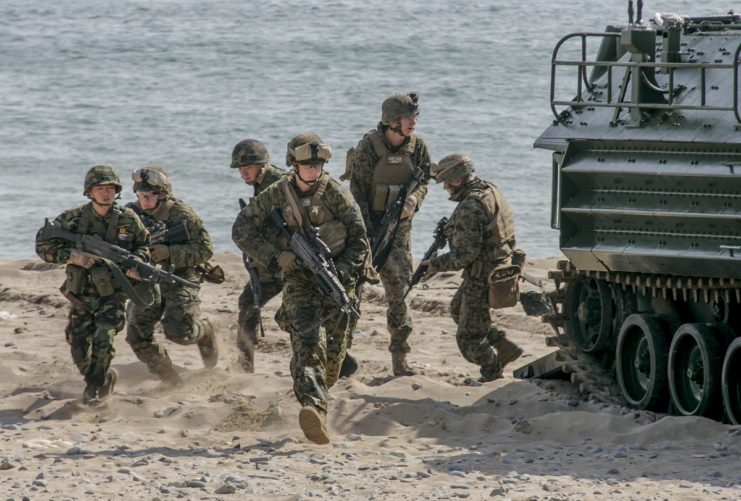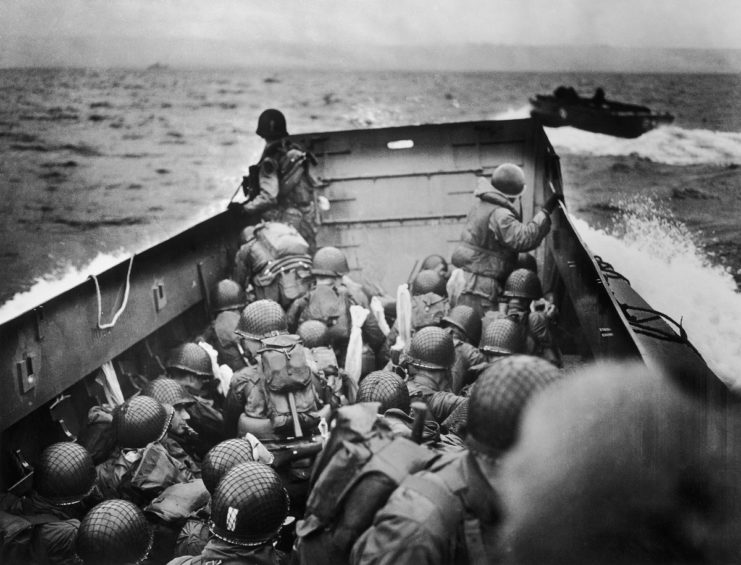Depending on who you ask, the meaning of “G.I.” can vary. From government issue to general issue, no one can seem to agree on one single answer. Surely, one of the most well-known designations for American troops has to have a fairly certain beginning, right? Actually, it’s a lot more complicated than you may have first thought.
There have been many different names to represent US soldiers over the decades, like Leatherneck, Grunt, Johnny Reb, Yank, and Jarhead. Some apply to specific branches or services, while others have fallen from use entirely, but the one name that has been used to describe many soldiers in the US ranks for decades now is G.I.
The G.I.

It is seen stamped on equipment, the name for a US law, and even the name for an entire line of toys called G.I. Joe.
The name has been popular among troops, who have often identified themselves as G.I.s. The term is sometimes used in a satirical manner to play on the idea that troops are just a tool in the eyes of the government.
In addition, the short length of the name makes it easy to fit it into documents or titles.
The name has been extended to represent others linked to the military too, like G.I. Jane, which was the nickname for members of the Women’s Army Corps (WAC), G.I. Jesus, for military chaplains, and G.I. bride, for a foreign woman married to a servicemember.
Throughout its existence though, many have used the term as an abbreviation for a few different things. Garrison issue, general issue, government issue, and general infantry are all interpretations of the name. General Douglas MacArthur went with the more common version of general issue when he scolded his surgeon for calling MacArthur’s men G.I.s; “Don’t ever do that in my presence… G.I. means ‘general issue.’ Call them soldiers.” MacArthur said.
So where did the name come from?

Unfortunately, the exact origin is hard to pin down, but there is a prevailing theory.
G.I. actually originated in WWI, not WWII.
The story goes that during the Great War, G.I. was stamped on items made from galvanized iron, like buckets and trash cans. Jokingly, American soldiers began calling large incoming German shells and bombs “G.I. cans,” with the nickname branching out to more items over time, such as equipment and even the troops themselves. It is likely that troops made this link because of the notion that they were a mass-produced tool, but also because galvanized iron is strong and tough, like troops.
As the term eventually ended up being used for pretty much everything related to the US troops, it began being interpreted as meaning “general issue,” or “government issue.” Although the name and its meaning was certainly well known by the early 1920s, there isn’t any official mention of it until 1935, where it is described as slang.
More From Us: Big Ego, Love Him or Hate Him But MacArthur Lead From the Front in WWI
G.I. was a well-established name by the time WWII came around, with cartoonist Dave Breger titling a comic strip “G.I. Joe” in 1942. In 1944 President Roosevelt signed the Servicemen’s Readjustment Act of 1944 into law, which became known as the G.I. Bill. This provided benefit schemes for veterans returning home from WWII.
So, you now know that the original meaning behind G.I. was not general issue or even government issue, but, perhaps underwhelmingly, galvanized iron. However, any of the common interpretations are valid today, as after all, if Douglas MacArthur believed it to mean general issue, we’re not going to argue that he was wrong.
